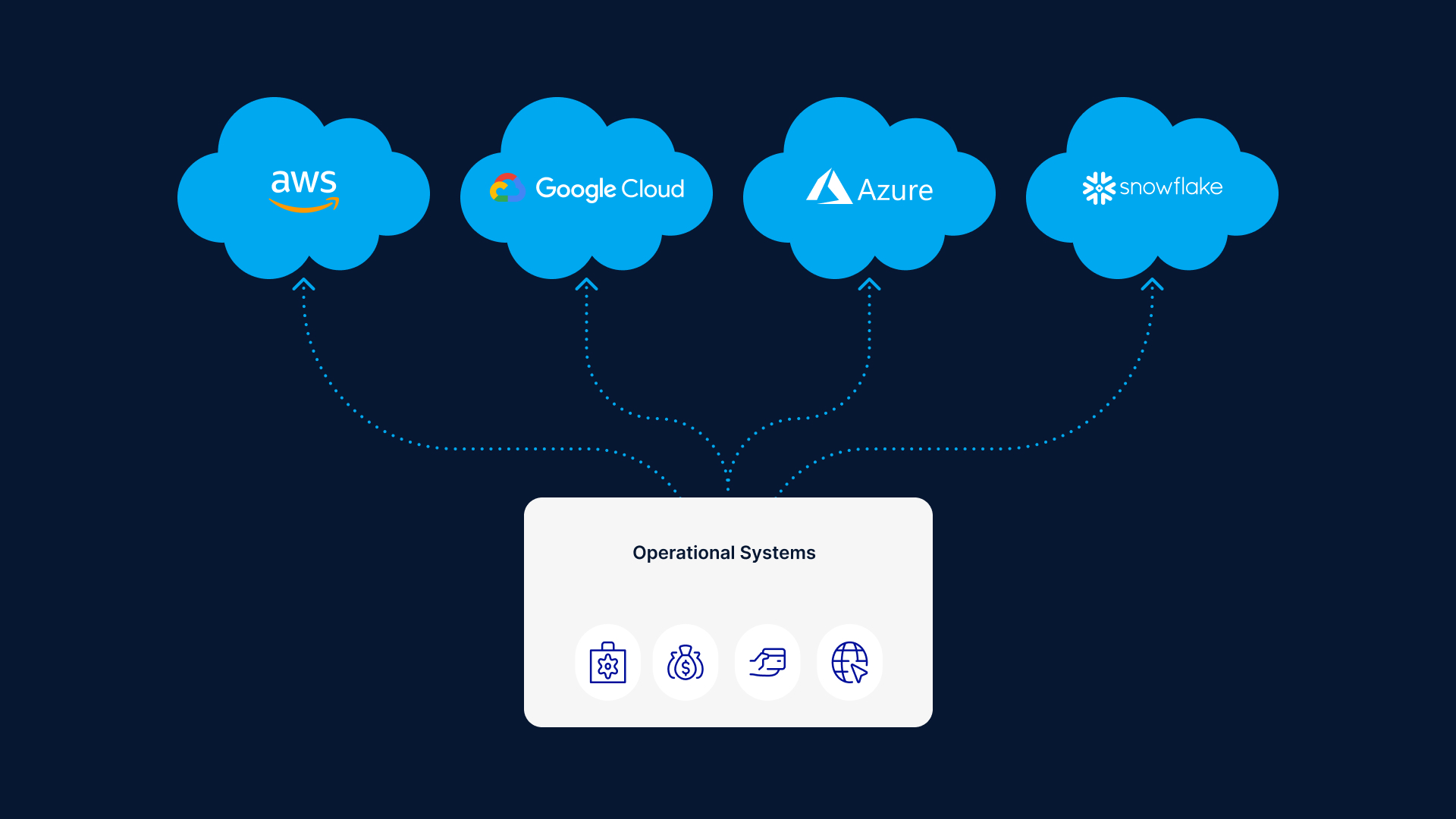In the current business environment, cloud computing has emerged as an essential component of the IT infrastructure. As more organizations move their applications and data to the cloud, multi-cloud architecture is becoming popular. Organizations need strong infrastructures supporting modern needs as they adopt more sophisticated technology. The potential of the multi-cloud strategy to increase IT infrastructure’s scalability and flexibility has led to its increasing popularity.
What is Multi-cloud Architecture?
A multi cloud strategy allows businesses to leverage the capabilities of multiple cloud computing services from various cloud providers to address specific business requirements. Multi-cloud environments often consist of two or more public clouds, two or more private clouds, or a combination of both. You can reduce vendor lock-in by creating a strategy that uses different vendors and selecting the capabilities that best meet the particular business objectives.
According to Statista, In 2023, over 76% of surveyed individuals verified using multiple clouds in their organizations. Businesses are increasingly utilizing multi-cloud solutions to run apps where they are needed without creating complexity.
To maximize the benefits of multi-cloud architecture, workloads must be tracked, secured, and managed accurately across all environments through a single interface. The more cloud providers you utilize, the more complex the management of the environment gets. While each environment can be managed separately, many IT teams lack time or resources. Multi-cloud management features should be integrated directly into the cloud provider’s products and solutions. It allows users to obtain visibility across cloud environments, monitor costs and usage, create standard security controls and rules, and move workloads to enhance availability.
Why is a Multi-cloud Strategy Important?
The multi-cloud architecture enables organizations to manage their apps and data completely, which is critical for business growth.
Here are the main factors that cause businesses to migrate to multi-cloud infrastructure:
- Flexibility and Scalability: Businesses must have flexible and scalable IT infrastructure to respond to changing needs. Businesses using a multi-cloud approach can add or remove services from various cloud providers based on the current demand. Multi-cloud enables enterprises to distribute workloads over multiple clouds, lowering the likelihood of downtime. Multi-cloud allows organizations to scale up or down their IT infrastructures efficiently. They can add or remove resources from different cloud providers as needed. It prevents overprovisioning and underprovisioning of IT infrastructure, which can result in inefficiencies and higher costs.
- Risk Mitigation: It is another significant aspect of using a multi-cloud strategy. Since the multi-cloud architecture involves more than one cloud service provider, organizations can rapidly move to other providers if one goes down. Redundant systems with robust authentication, API asset aggregation, and vulnerability testing improve risk mitigation capabilities.
- Cost Optimization: Organizations can optimize costs and lower IT expenditures by utilizing multiple cloud providers. Companies can use numerous cloud vendors for different services, using each cloud’s unique cost structure. Businesses can compare providers and negotiate the best pricing based on IT needs. You can pick the best vendor based on its payment options, adjustable agreements, customized capacity, and other essential elements.
What Are the Challenges of Multi-cloud Architecture?
A multi-cloud strategy comes with challenges that some businesses find difficult to overcome. While moving the focus from one to multiple vendors, you will have to deal with these issues:
- Interoperability: Businesses must ensure their apps and services work across multiple clouds. Organizations must create appropriate measures, like APIs, to enable their applications and services to integrate with various cloud providers.
- Security: Security is paramount for businesses as they navigate multiple clouds. Security measures, including encryption and access control, are imperative to safeguard data from unauthorized access and ensure its integrity across diverse cloud environments.
- Complexity: Effectively navigating multiple cloud providers can be complex and need specialized expertise. Businesses must ensure their IT teams undergo professional training and possess the requisite skills to handle multi-cloud environments.
How to Develop a Multi-Cloud Strategy?
As many businesses operate in a multi-cloud environment, carefully crafting a multi-cloud strategy aids in developing a proper multi-cloud environment.
Several best practices are essential for companies adopting a multi-cloud environment:
- Evaluate the business needs to understand the motivation behind embracing a multi-cloud strategy. Start by identifying specific areas or scenarios where adopting a multi-cloud approach can offer benefits. Analyze workload specifications, scalability demands, data confidentiality, and compliance considerations.
- As you search for suitable public providers, thorough research is essential to align your choices with the organization’s workload requirements. Assess the cloud providers that best align with your organizational objectives, which may entail a combination of on-premises infrastructure and diverse public cloud offerings. Evaluate each provider’s capabilities to ensure they meet specific requirements.
- Prioritize security in the initial stages of a multi-cloud strategy. Develop a comprehensive plan that includes security controls for each environment, enforces cybersecurity best practices, and incorporates tools for a secure multi-cloud setup. Make informed decisions on whether your cloud provider or in-house measures will handle specific security tasks. Additionally, ensure compliance with industry regulations and government standards to fortify multi-cloud strategy against potential threats.
- Monitoring and managing cloud environments poses challenges, especially in tracking performance effectively. Explore the tools and solutions to ease the transition to a multi-cloud environment. These tools are crucial in streamlining workload deployment, orchestrating infrastructure, managing security, and monitoring operations across diverse cloud providers.
Conclusion
Embracing a multi-cloud architecture benefits businesses, effectively tackling various challenges that may impact the operational framework. When implemented effectively, a thoughtfully designed multi-cloud strategy brings cost savings and builds a scalable cloud platform for the business. Organizations can collaborate with cloud development service providers to navigate the complexities of multi-cloud management. These experts assist in implementing best practices tailored to the business’s unique needs, allowing for the optimization of the multi-cloud strategy. Through customized solutions, businesses can unlock the full potential of a multi-cloud approach, ensuring a seamless integration that aligns with their specific goals.
Contact today to learn how relentless innovation drives customer success and enables comprehensive transformation through cloud services, empowering customers to achieve Digital+.
